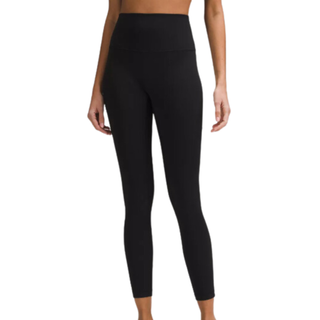Postmedia may earn an affiliate commission from purchases made through our links on this page.
Fitness
Fitness: The secret to aging exceptionally well

The story of an 82-year-old Italian who decided to take up triathlon at the age of 75 shows it’s never too late to become more active.
Article content
Exceptional aging is a relatively new term, given that for decades getting older was viewed as a time to slow things down. Reading books, taking long walks, working in the garden and indulging in mid-day naps was how the second half of life was supposed to look. Yet despite society’s acceptance that aging is synonymous with idleness, a few old geezers didn’t listen. Thank goodness. Science has documented a growing number of active older adults who have proven that, despite an inevitable decline in the physical function, biological aging doesn’t impede exceptional aging. In other words, age and aging don’t always progress at the same rate.
Advertisement 2
Article content
There’s no better example of the untapped potential of our senior population than a recently published case study of an 82-year-old Italian male who decided to take up triathlon at the age of 75. Admittedly he was already active, playing tennis, golf, swimming and walking a few hours a week, before deciding to enter his first sprint distance triathlon (750-metre swim, 20-kilometre bike and five-kilometre run). By the time he was 82, he was training like someone decades younger. A typical weekly schedule included three 60-minute swim workouts, cycling two to three hours twice a week and four running workouts of about an hour each — adding up to 10-12 hours of physical activity on a seven-day cycle. He also participated in what the authors of the case study described as “an extraordinary number of competitive events.”
That kind of dedication to improving performance resulted in a VO2 max (a measure of aerobic power) of 39.8, 164 per cent over and above what’s considered the norm for men in their 80s. Impressively, it also ranks in the 60th percentile of men in their 40s.
Advertisement 3
Article content
“To the best of our knowledge, the cardiorespiratory fitness described is the third highest ever described in the literature among octogenarians,” said the authors of the case study.
Results like this provide much needed motivation for our aging society not just to stay active, but also to take on new physical challenges even at an advanced age. With one-quarter of Canadians 65 years and older by 2040 and 80-year-olds part of the fastest growing age demographic in the world, it’s time to change the narrative suggesting that aging and exercise don’t go together — especially among people in their 70s and 80s.
Yet despite the spectacular results achieved by this active 82-year-old, don’t start thinking that 80 is the new 40. There’s no disputing that the body’s cells, muscles, tissues and organs begin a gradual decline in function as early as our 30s. Aerobic capacity falls by three to six percent in the third and fourth decade of life. After age 70, that loss of aerobic power accelerates to more than 20 per cent per decade. But not everyone’s physiological decline is at the same rate nor is it permanent once it starts waning. A study of elite male long-distance runners who maintained a vigorous training schedule noted a decline in VO2 max by a mere 0.6 per cent a year over a 22-year period, compared to a 1.5 per cent annual decline in their sedentary peers. An inactive lifestyle accelerates the aging process. Regular exercise slows it down.
Advertisement 4
Article content
That’s not to say that every 80-year-oid who hits the gym has found the fountain of youth. Far from it, especially when it comes to competing at the elite level. Studies of masters athletes show that world-class times don’t age well. Strength, speed and power decline with age, even among the best athletes in the world, with an expected reduction in athletic performance of 46.5 per cent from 25 to 89 years old or about 0.7 per cent a year.
That may seem to deny the theory that training at the same intensity and volume as someone decades younger can forestall the aging process. But the goal isn’t to compete in the Olympics against athletes decades younger, but rather to live life to its fullest for as long as possible. That can best be achieved by avoiding chronic diseases, maintaining mobility and independence and staying mentally sharp and socially engaged.
An active lifestyle does all of that and more, even if you aren’t prepared to take up triathlon when you retire or spend 8-10 hours a week training to compete in the masters’ circuit. What the workout regimen of an 82-year-old triathlete demonstrates is that trainability doesn’t disappear with age. Taking up a new sport, setting ambitious fitness goals and getting into tip-top shape aren’t solely youthful pursuits.
“Participation in lifelong exercise may play a key role in maintaining or improving cardiorespiratory fitness, even at 80-plus years of age,” said the researchers who studied the late bloomer octogenarian.
These findings aren’t just important for anyone in their golden years, but also for those approaching middle age. Regular exercise is one of the most effective strategies for maintaining health and wellness no matter what year you’re born. And don’t fall into the mindset that age offers an opportunity to take your foot off the gas. The more regular and vigorous the workouts, the more likely it is that you extend the athletic vigour of youth well into your later years. Maybe you won’t be crossing the finish line as quickly as you once did, but crossing the finish line at 80-plus is the type of exceptional aging we can all strive to achieve.
Recommended from Editorial
-

Jill Barker: Does your birthday determine athletic success?
-

Fitness: It’s never too early to train for better balance
Advertisement 5
Article content
Article content

Fitness
Working out but not seeing results? A PT confirms whether 30-minute workouts are top-tier for boosting fitness

While some of you have your healthy lifestyle down to a tee – balanced nutrition, adequate sleep and a finely tuned workout regime incorporating strength, cardio and flexibility training – others struggle to know where to start when it comes to fitness. And with Google searches for “Is 30 minutes of exercise a day enough?” spiking, it seems that many of you aren’t sure about the length of time or number of workouts to aim for weekly.
And to make matters even more confusing, knowing how often you should workout isn’t always as simple as it should be. You see, your progress will depend on a combination of factors which might seem unconnected to exercise but still have an impact. Sleep, for example, has been shown in various studies (like this one, published in the European Journal of Applied Physiology) to affect physical performance, while research also shows a bi-directional relationship between exercise and stress.
Added to this, it’s important to take individual personal goals into consideration. Someone who’s training for a marathon will want to see very different results from someone training to lift a certain barbell at the gym. Both will be wildly different to someone just starting out on a fitness journey – you catch our drift.
It’s also important to factor suitable rest days into your training to yield maximum benefits from your training. Most of us are aware that there’s a delicate balance to be struck between working out enough to challenge ourselves and see results yet not risk overtraining, injury, stresses and strains – but more on that later.
With this in mind, we’ve asked personal trainers whether 30 minutes of exercise a day is enough to see results with our workouts – and you might be surprised by the answer. Keep scrolling for the tea, but in the meantime, you might want to check out our explainers on how much to workout to see results, how to motivate yourself to work out, and how long it really takes us to get fit, here. Plus, don’t miss the latest on whether you’re better off working out during the week or at the weekend, while you’re at it.
Is 30 minutes of exercise a day enough to see results? Your guide
Should I aim for 30 minutes of exercise every day?
Let’s take a look at the NHS recommendations before we get into it. As per their Live Well website, they recommend all adults from the ages of 19 to 64 move every day. That said, they’re not necessarily implying you should workout every day – a distinct difference.
As a general rule of thumb, they recommend aiming for at least two strength sessions a week (weighted sessions, resistance band routines and bodyweight workouts all count) and at least 150 minutes of moderate aerobic activity a week (think walking, swimming, cycling or doing chores around the house). If you’d rather, you can aim for 75 minutes of vigorous-intensity aerobic activity per week instead of moderate. This includes higher-intensity workouts, like running, sprinting, and HIIT.
Of course, that doesn’t change the fact that we’re constantly bombarded with messages about moving our bodies more. Whether it’s your Instagram feed flooded with people running half marathons or friends in your group chat bending our ear about joining a charity fundraising walk, the noise around exercise has seemingly never been louder. And let’s not even mention our penchant for 10,000 steps a day…
So, how does this answer the much-searched 30-minute-every-day question? For the most part, it’s no secret that all movement is good. We all know that moving our bodies is vital for both mental and physical wellbeing, but is it possible to actually work out too much? Could we be hampering our results by overtraining?
Well, as per the NHS website, while moving every day – aka hitting your daily step count – is recommended, there’s really no need to workout every single day. As they stress: “You can spread your exercise out over four to five days a week.”
And one thing the experts are clear on: how often you should work out is entirely individual, and will always depend on your end goals. “Most people find their sweet spot is to work out three to five days a week,” advises personal trainer and founder of Dare to be Fit, Grace Reuben. “However, this depends on their fitness level and goals. Balance is important because too little effort may obstruct progress and too much effort may lead to burnout or injury. Consistency builds success over time. Whether strength, endurance, or general fitness is being targeted for, the prioritisation of movement that is enjoyed will keep you coming back.”
In a nutshell: you have to enjoy what you’re doing to keep coming back for more. With this in mind, let’s take a look at some of the different fitness goals you may have, from building endurance to improving overall fitness, and discover what (in an ideal world) really yields results.
1. How often to work for fitness maintenance
If you’re already fit and active with no specific goals in mind (don’t tell the WhatsApp group), your workouts should be designed to maintain your fitness. While this will look different for everyone, as a general rule of thumb you can follow the NHS guidance of 150 minutes of moderate-intensity activity, or 75 minutes of intense activity (choose your poison) per week.
“If you’re happy with your current fitness level and just want to maintain it, aim for three to four days a week of moderate-intensity exercise,” says Reuben. “This could include a mix of cardio, strength training, and some flexibility or mobility work. Even two higher-intensity sessions, combined with lighter movement (like walking or yoga), can be enough to stay on track.”
@spen_fitness
♬ Beat Goes On – The All Seeing I
2. How often to work out to build muscle
Looking to build muscle? You’re not alone – strength training has been enjoying an uptick in popularity, lately, and for good reason. Weight training is vital as we age, particularly for women, who lose both muscle mass and bone density in a double-whammy of ageing downsides. But a few strength training sessions each week can help protect against this – and don’t worry, we’re not talking heavy weights (unless you want to!)
“If you are looking to build muscle, you’ll need to engage in strength training exercises that target all major muscle groups ideally two to three times per week,” advises personal trainer and founder of GO Fitness, Emily Saxby-Collins. “However, I’d recommend that you allow for at least one day of rest between sessions to allow your muscles to recover and grow.”
Think bodyweight strength training such as lunges, squats, push ups etc, or use a resistance band, kettlebell or dumbbells to add extra spice.
@mollyk_fitness
♬ original sound – Mollykfitness
3. How often to work out to boost fitness
Keen to boost your fitness? Join the club – it’s probably safe to assume that the majority of regular exercises wouldn’t mind improving their fitness. After all, who doesn’t want to find everyday movements and activities that bit easier, not to mention having the kudos of being able to run for a while without stopping?
So, in order to make fitness gains, you’re going to have to do a little work. “For a general fitness upgrade, aim to workout four to five days a week,” says Reuben. “This can include a mix of cardio, strength, and flexibility training to hit all the bases. For example, you could do two cardio sessions, two strength sessions, and one yoga or Pilates session to round things out. The variety will help improve endurance, strength, and mobility while keeping things interesting.”
@growwithjo
♬ Just Wanna Rock – Lil Uzi Vert
4. How often to work out for endurance
When we talk about endurance, we’re essentially talking about your stamina, or your ability to withstand the more unpleasant side effects of physical exertion and carry on regardless – think aching muscles, sweating, laboured breathing. These are all signs that your body is being tested – and they’re generally a good sign, provided you know when to stop!
While we can’t stop the voices in your head willing you to stop running (just us?), we can advise you on how to push through the physical barriers and achieve longer runs, stronger lifts and so on.
“In order to improve endurance, ideally you should be training for around four to six sessions each week,” advises personal trainer Edwina Jenner. “This should comprise a mixture of long and slow sessions and shorter, more intense ones (think a longer, steady run mixed with a HIIT session) and include a progressive increase in duration and distance, to challenge yourself.
Do note here: none of the experts we spoke to recommend intense activity six days a week unless you’re super fit (not to mention, blessed with the time to do so). If that’s you, mixing your training up (also known as cross-training) can help to prevent injury and burnout and ensure you’re not taxing the same muscles groups day after day. And remember: for best results, you must include (at least) one or two rest or very light activity days, too.
The upshot is, whatever your workout goals are, they’re going to take time, consistency and effort. There are no quick fixes, when it comes to fitness – and anyone who says otherwise isn’t telling the truth. That said, your goals are unique to you, so it’s important to work out what they are and (if you’re really committed to change) make a plan.
“If you are training for a specific goal, having a clear training plan is essential to reaching that goal. However, these guidelines can also provide a framework for varying your training, whatever you’re looking to achieve,” says Jenner. “The likelihood is you’ll have periods when you want to build strength, while at other times, you’ll just want to maintain your fitness. There are always ways to make workouts work for you.”
@jshresruns
♬ original sound – Josh
Shop MC UK’s go-to workout essentials here:
Free People Movement crop top
Feel more inclined to work out when you look the part? Yep, us too – and this crop top from FP Movement hits all the right notes. Breathable fabric and super cute ruched detailing strikes the style and substance balance perfectly.

We’re adding these to our Christmas list (again) this year – leggings don’t get much better than the cult-favourite Align range from lululemon. Soft, supple and supportive? It’s a trifecta we’re all over.

Alo Yoga unisex throwback socks
Speaking of Christmas lists, no stocking is complete without at least one pair of socks, so make yours these Alo Yoga beauties. They’ll look great whether you’re planning a Boxing Day walk or to simply curl up on the sofa – the choice is yours.
How can I make sure I’m progressing in my workouts?
Whether we’re talking about building strength, fitness or endurance, the aim is progressive overload. Essentially, this means consistently moving those goalposts to stay outside your comfort zone – that’s where the magic happens. However, it’s important to make sure you’re looking after yourself, at the same time. Saxby-Collins’ top tips include taking rest days when you need them and focusing on consistency. Not to mention, be sure to incorporate a variety of exercises into your routine and gradually increase the intensity, duration, or frequency of your workouts over time, rather than overwhelming yourself.
Fitness
The overlooked key to fitness? Strengthening your joints and tendons

Isometric exercises, like planks or lunge holds, require holding a position for an extended period. In these positions, your muscles are firing, but you’re also working on the alignment of the joint and working the tendon to hold that position, says Wulke. Ho adds that while ligaments and joints cannot technically be trained directly like tendons, you can support their health by strengthening the surrounding muscles and encouraging proper movement patterns.
Wulke often programs training days with a mix of goals for her athletes: “high” days for muscle and strength development and “low” days focusing on alignment, isometric holds, and mobility. But most people don’t have enough time to dedicate separate days for joint-specific work. Instead, try integrating these movements into your existing strength training sessions. Consider adding a few sets of isometric holds during your warm-up or as a finisher.
(Is cracking your joints bad for you?)
During your workouts, focus on the eccentric phase of your movements. Slow down and maintain control throughout the exercise to help you ensure proper form. You can also use higher reps and lower weight to reduce the risk of overstressing connective tissues.
Last, Hinson recommends incorporating low-impact exercises such as walking, cycling, Pilates, water aquatics, and yoga. “Taking care of and improving the structures that make the joints stronger and more flexible—it really will pay huge dividends in keeping [people] out of my office and away from injury,” he says.
Fitness
Avoid doing these gym exercises now! Orthopaedic doctor reveals exercises that do more harm; the answers may shock you

Did you know that some popular exercises that we all do at the gym to stay fit and healthy may be doing more harm than good? Dr Venkatesh Movva, an orthopaedic doctor trained in Sports Medicine, sat down with Ranveer Allahbadia for The Ranveer Podcast, where he talked about the exercise one should avoid at the gym. The answers will surprise you.
(Also Read | Ranbir Kapoor ‘decides to clap’ in between his pullups. Guess how Alia Bhatt reacted?)
Avoid doing these gym exercises now!
In the clip shared on The Ranveer Show Podcast Instagram page, with the caption, “Dr Venkatesh on Which Exercises you should Avoid in Gym?”, Ranveer asks Dr Movva which exercises he would recommend gymgoers to avoid as an orthopaedic doctor. He suggested three exercises which are quite popular among gymgoers aiming to get fit, lose weight or stay healthy. According to him, one should not do overhead exercises, deadlifts, and crunches.
Dr Movva stated in the clip, “Overhead, heavy [exercise]. I mean, you can go stretch, but no military press, number one. Number two crunches; avoid them. Number three, deadlifts. (sic)” To this, Ranveer replied, “So, I’d replace the military press because it’s for the anterior delts with just front raises.” As an alternative, Dr Movva suggested people to ‘bend down’ during such exercises. “You can go bend down, raise it [weights], rather than overhead (sic),” he said.
While Ranveer, a fitness enthusiast himself, said that he would replace crunches with planks, Dr Movva suggested ‘planks and bridges’.
Lastly, for why one should avoid deadlifts, an exercise you must have seen many celebrities doing at the gym and fitness influencers pushing their followers to include in their routine, the orthopaedic doctor said, “I see more injuries than benefits with the deadlifts. If you are really well-trained and have a good muscle balance, do it. But if you are trying to get better, that’s one thing you may want to avoid. Because the risk of injury is very high. There are so many other exercises that you can compensate without doing these things.”
Disclaimer: This article is for informational purposes only and not a substitute for professional medical advice. Always seek the advice of your doctor with any questions about a medical condition.
-
Business1 week ago
Column: OpenAI just scored a huge victory in a copyright case … or did it?
-

 Health1 week ago
Health1 week agoBird flu leaves teen in critical condition after country's first reported case
-

 Business6 days ago
Business6 days agoColumn: Molly White's message for journalists going freelance — be ready for the pitfalls
-

 Science3 days ago
Science3 days agoTrump nominates Dr. Oz to head Medicare and Medicaid and help take on 'illness industrial complex'
-

 Politics5 days ago
Politics5 days agoTrump taps FCC member Brendan Carr to lead agency: 'Warrior for Free Speech'
-
/cdn.vox-cdn.com/uploads/chorus_asset/file/25739950/247386_Elon_Musk_Open_AI_CVirginia.jpg)
/cdn.vox-cdn.com/uploads/chorus_asset/file/25739950/247386_Elon_Musk_Open_AI_CVirginia.jpg) Technology5 days ago
Technology5 days agoInside Elon Musk’s messy breakup with OpenAI
-

 Lifestyle6 days ago
Lifestyle6 days agoSome in the U.S. farm industry are alarmed by Trump's embrace of RFK Jr. and tariffs
-

 World5 days ago
World5 days agoProtesters in Slovakia rally against Robert Fico’s populist government
















